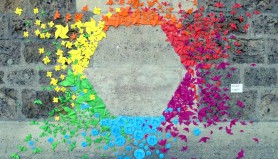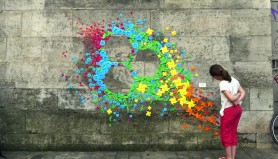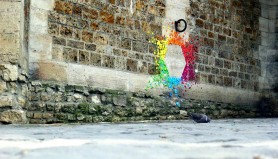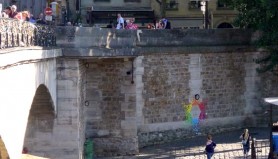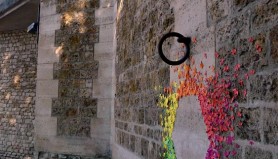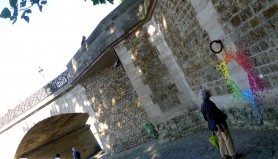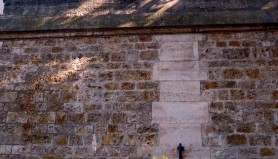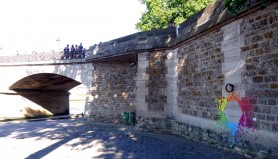One of the last installations, before to move for Asia.
Simplicity and geometry of the hexagon, one of the most perfect geometric natural form built by the bees…
A little tribute at this insects because of they are threatened…
We say that Albert Einstein said: “If the bee will disappear, humanity will have only four yours of life”
(More details below the photos)
This urban installations, ephemeral and no degrading, created with hundreds of foldings origami, grow up in the town with an important visibility thanks to their big size and their bright colors.
This series was inspired to me after my year in Japan and after the events of the 2011 march 11, which induced the explosion of the nuclear plant of Fukushima when I was there.
After this events and some readings, I decided to participate to the tribute for Sadako Sasaki, added to this my consideration for the Japanese people and all the victims of nuclear disasters.
Sadako lived the horror of the Hiroshima bomb and its tragic consequences… Some years later, she becames ill because of the atomic event of 1945. Friends talk to her about the Japanese legend of the one thousand cranes: to get a wish exhausted, you have to fold 1000 cranes in paper. Her wish was to heal from her illness but she died at twelve years old, after folding only 644 cranes…
Since this time, children from all the Japan send to Hiroshima cranes of paper, in the memory of Sadako. A memorial place has been created for her, with this message:
“This is our cry, this is our pry, For build peace in the world”
The origami crane became an international symbol of peace. So, I wanted to come back to this page of the history, which is far but really actual too. It’s also a tribute for all the victims of the violent actions in our world. The message is hard, but speaking about it in a dark manner wasn’t necessary for me. That’s why I preferred “the optimism of the action instead of the pessimism of the think” (it’s the words of Harald Zindler) It’s a personal vision that I wanted to give but it’s important too to give some way of thinking for everyone.
I prefer, instead of impose some ideas, offer a reflexion on our relations between humans and our behaviour with the natural environment.
We can see an human solidarity network thought of the accumulation of all the papers.Sometimes, I like to imagine when I am folding that all the o
Spectrum in the city, abstract rainbows of paper…
This urban installations, ephemeral and no degrading, created with hundreds of foldings origami, grow up in the town with an important visibility thanks to their big size and their bright colors.
This series was inspired to me after my year in Japan and after the events of the 2011 march 11, which induced the explosion of the nuclear plant of Fukushima when I was there.
After this events and some readings, I decided to participate to the tribute for Sadako Sasaki, added to this my consideration for the Japanese people and all the victims of nuclear disasters.
Sadako lived the horror of the Hiroshima bomb and its tragic consequences… Some years later, she becames ill because of the atomic event of 1945. Friends talk to her about the Japanese legend of the one thousand cranes: to get a wish exhausted, you have to fold 1000 cranes in paper. Her wish was to heal from her illness but she died at twelve years old, after folding only 644 cranes…
Since this time, children from all the Japan send to Hiroshima cranes of paper, in the memory of Sadako. A memorial place has been created for her, with this message:
“This is our cry, this is our pry, For build peace in the world”
The origami crane became an international symbol of peace. So, I wanted to come back to this page of the history, which is far but really actual too. It’s also a tribute for all the victims of the violent actions in our world. The message is hard, but speaking about it in a dark manner wasn’t necessary for me. That’s why I preferred “the optimism of the action instead of the pessimism of the think” (it’s the words of Harald Zindler) It’s a personal vision that I wanted to give but it’s important too to give some way of thinking for everyone.
I prefer, instead of impose some ideas, offer a reflexion on our relations between humans and our behaviour with the natural environment.
We can see an human solidarity network thought of the accumulation of all the papers.Sometimes, I like to imagine when I am folding that all the origamis are like people, and I imagine some imaginary positive connection between this humans. Therefore, every origami represents in a simplify way some natural elements, in a graphic way, like flowers or birds.
We can also feel the connection HUMAN/NATURE and question ourself on the importance and the balance of it. To finish, the choice of the colors is to use again this naive vision of the rainbow, like some pacific actions or association, for example, the flag of the peace, the flag for save the climate, the flag LGBT… etc. Greenpeace uses the rainbow colors too, perceived in the world like a peace, diversity and harmony symbol.
All the geometric form used are liked an abstract representation of huge idea of the world like harmony, spirituality and more…
There is a lot of other things to say about my way to think but I prefer that everyone use is own personnal way… My words are just some statements about this series of urban installations…
